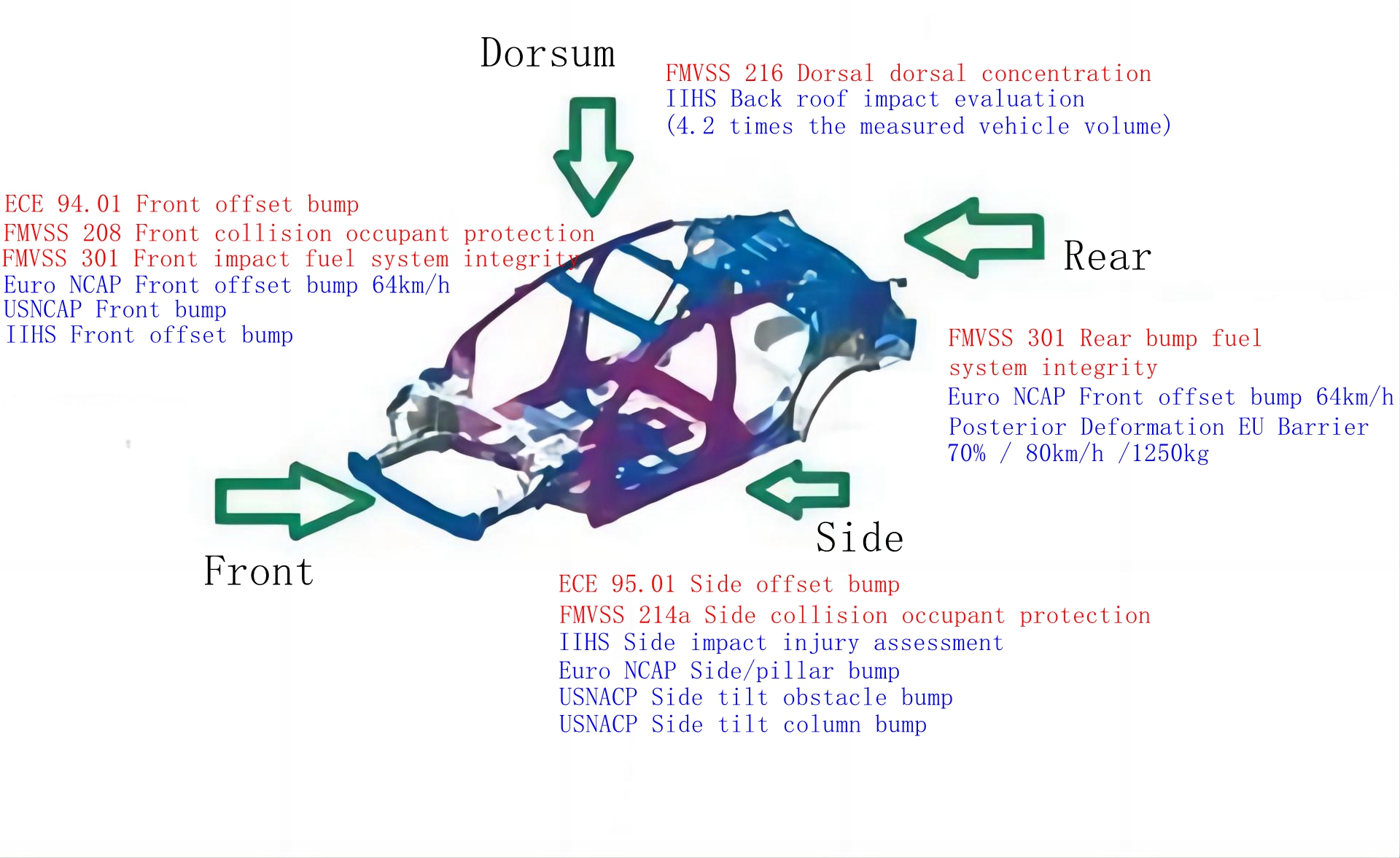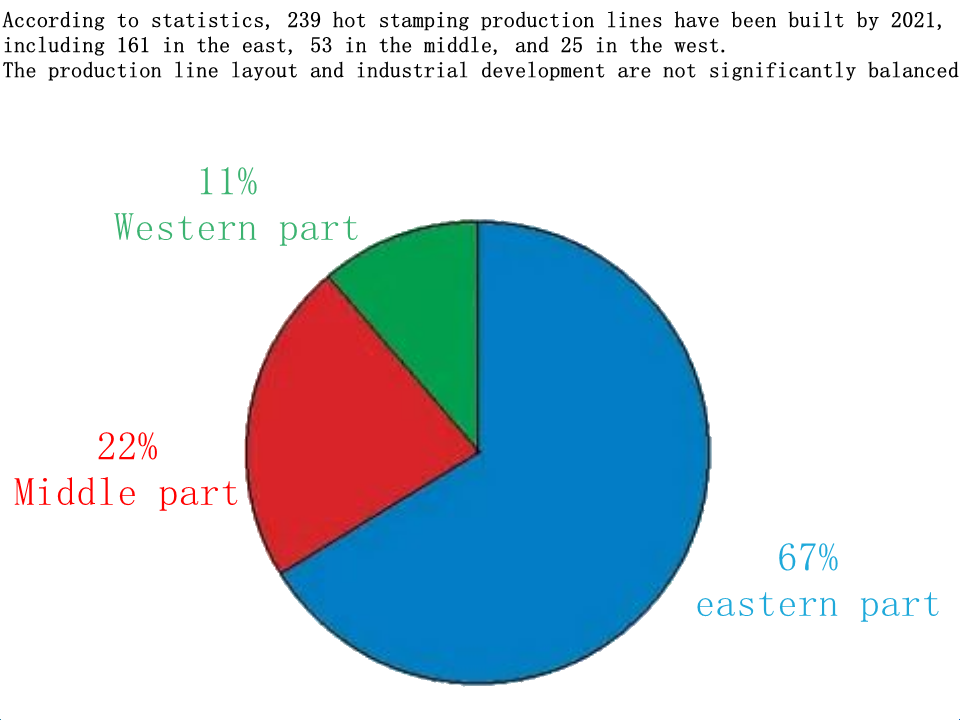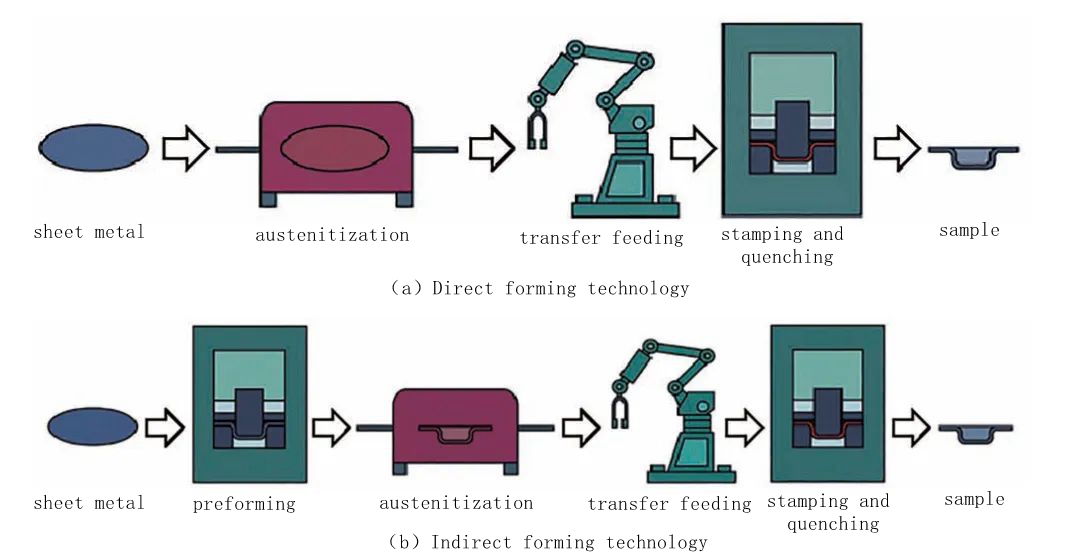Industry news
Intelligent Manufacturing of Hot Stamped Formed Components (Part 1)
The development direction of the automotive industry
To address the three major issues of fuel consumption, emissions, and safety posed by traditional automotive processes, the automotive industry is evolving towards electrification, intelligence, and lightweighting.
In recent years, new energy vehicles (NEVs) have received significant attention from the government and have experienced rapid growth. In 2020, China's NEV sales reached 1.367 million units, and by 2022, NEV sales had reached 6.887 million units, with pure electric vehicles accounting for 5.365 million units and plug-in hybrids for 1.518 million units. At the same time, when developing electric vehicles, it is crucial to consider China's energy structure. Only by addressing the issues of materials and recycling of energy storage batteries can the healthy development of electric vehicles be ensured.
Intelligence is a reflection of the level of development in the automotive industry. It not only reduces the labor intensity of drivers and passengers but also effectively reduces the occurrence of automobile accidents. Similarly, intelligence should be strictly integrated into the entire process management system for manufacturing, usage, and recycling of automobiles.
Lightweighting is the most direct and effective means of achieving energy conservation and emission reduction in automobiles. It reflects the level of development in the automotive industry and is a guideline that the industry must adhere to for its long-term healthy development. As two fundamental conditions for lightweighting, it is essential to ensure that the functionality of vehicles is not compromised and to guarantee or enhance safety to meet the strict requirements of various safety regulations.
Figure 1 illustrates the common industry requirements and relevant safety regulations for various automotive components. This necessitates the use of high-strength steel and ultra-high-strength steel. High-strength and ultra-high-strength steel can improve safety while meeting lightweighting requirements, making them a high-performance and cost-effective material that other materials cannot match. However, high-strength steel is challenging to form, has significant springback in formed components, and results in substantial tool wear. To address the forming issues of complex parts made of ultra-high-strength steel, hot stamping technology has emerged.

Figure 1 Various safety collision regulations for automobiles
Development of hot stamping technology
In 2014, the hot stamping forming industry and technology began to emerge in China and experienced rapid development, quickly gaining recognition on a global scale. By 2017, there were a total of 530 hot stamping forming production lines worldwide, with China, Europe, and North America each accounting for a quarter of them. In 2018, the global count of hot stamping forming production lines reached 580, with China having 180 of them. By 2020, the number of hot stamping forming production lines in China had grown to 200, and in 2021, it had increased to 239. As of 2022, the count has approached 260. The distribution of hot stamping forming production lines in China is shown in Figure 2.

Figure 2 Distribution of hot stamping production lines in China in 2021
From the author's personal experience, there has been no industry technology that has developed as rapidly in China after its introduction, a pace that is rarely seen both domestically and internationally. The rapid development of hot stamping forming technology in China can be attributed to various factors.
(1)Strong Market Demand: After 2000, the Chinese automotive industry grew rapidly, and by 2017, the annual automotive production in China was close to 30 million units. Chinese automotive products required lightweighting and improved safety performance, creating a vast market space for hot stamping products. This rapidly accelerated the development and application of hot stamping technology in China. Simultaneously, with the construction of numerous hot stamping forming production lines and intense market competition, both product and hot stamping material prices saw significant reductions, further stimulating the interest and application of hot stamping products by automakers.
(2)Increased Awareness and R&D: By 2014, there was a growing understanding and research into the hot stamping technology process, equipment, and materials in China. In 2014, China initiated the International Conference on Advanced High Strength Steel and Press Hardening (ICHSU) jointly with China Automotive Technology and Research Center (CATARC) and Huazhong University of Science and Technology. Since then, six conferences have been successfully held, publishing over 550 papers. Additionally, the "Hot Sheet Metal Forming of High-performance Steel" international conference (CHS2) initiated jointly by Luleå University of Technology in Sweden and the University of Kassel in Germany has been held every two years since 2005, with seven conferences held by 2019 and seven collections of papers published, totaling over 500 articles. These international conferences and paper publications not only accelerated technological advancements but also laid a solid technical foundation for the widespread adoption of hot stamping in China. Moreover, significant progress has been made in the localization of related hot stamping technology processes, equipment, and materials. Nowadays, most of the relevant technical equipment and materials are domestically produced, resulting in substantial price reductions. Additionally, the combination of domestic universities and research institutions with industry and government support has facilitated substantial research and development in hot stamping technology and industrialization.
Despite the rapid development of the hot stamping industry and technology, some issues have emerged:
The first category of problems includes issues related to continuous roller furnace roller lifespans, adhesion problems between aluminum-silicon-coated sheets or components and roller surfaces, application standards for hot stamping products or equipment, wear of hydraulic equipment cylinder pistons leading to oil leakage issues, and the lifespan and maintenance of imported equipment. These issues impact the use and potential of the equipment.
The second category of problems includes concerns about material strength levels, the types and thicknesses of coated plates, matching the strength and ductility of hot stamping products, and hydrogen embrittlement in ultra-high-strength steel.
The third category of problems includes challenges in evaluating the functionality of large hot stamped parts, technical issues related to the design, manufacturing, and simulation of hot stamping dies for extra-large parts, and the development or application of equipment for ultra-high-strength parts. This includes how to utilize the independently developed production lines or handle batch production and the development and application of hot stamping parts for commercial vehicles.
The fourth category of problems relates to the localization of imported passenger car technology and equipment and effectively replacing imported products.
Intelligent manufacturing technology and systems
The meaning of intelligent manufacturing is to achieve information-based manufacturing throughout the entire product lifecycle, which involves manufacturing under wide-ranging sensory conditions. It is the result of a deep integration of information technology and industrialization. Intelligent manufacturing technology fully utilizes advanced technologies such as modern sensing technology, network technology, automation technology, and human-like digital technology. Key features include cloud computing with big data, artificial intelligence technology, the fusion of information and physics technology, process information security technology, wireless sensing technology, and more. Through intelligent sensing, human-machine interaction, decision-making, and execution technologies, it achieves the intelligence of product design, manufacturing processes, and equipment.
An intelligent manufacturing system is an intelligent system composed of intelligent machines and human experts. It can not only simulate relevant results and conduct data analysis, reasoning, judgment, conceptualization, and decision-making during the manufacturing process through computer modeling, but also collect, store, refine, and share results and data generated during the manufacturing process, continuously improving and completing the entire product manufacturing process. The objectives of an intelligent manufacturing system include achieving product quality traceability, making production equipment capable of sensing, managing and controlling the production process, and analyzing various data and learning from various experiences during the production process.
The next-generation intelligent manufacturing system is an integrated ecosystem that combines human and physical elements. It involves human intelligence in the analysis and optimization of production data and process data, integrates various information to build a process control system, and establishes an analytical system based on cloud data. Subsequently, it integrates various systems through sensor networks. The most essential characteristic of the next-generation intelligent manufacturing system is to enhance the cognitive and learning capabilities of the information system. It not only possesses strong sensing, computing, analysis, and control capabilities but also has the ability to learn and produce knowledge. At this stage, advanced intelligent technology fundamentally transforms human-information-physical systems, forming a new generation of human-information-physical systems. This system involves transferring some of the human learning-based cognitive work to database-driven information systems, endowing the system with cognitive and learning capabilities. The integration of humans into the loop further enhances intelligence, and the deep fusion of human and machine will fundamentally improve the system's ability to handle complex and uncertain problems. Therefore, hot stamping processes require this kind of intelligent manufacturing-based human-machine interactive processes.
Analysis of thermoforming process
The hot forming process is divided into direct hot forming process and indirect hot forming process, as shown in Figure 3. The design and control of the hot forming heating and cooling process is a typical intelligent manufacturing process. The specific process is as follows.

Figure 3 Comparison of two types of hot stamping forming processes
(1)Mechanical loading and furnace entry: Accurate positioning is required.
(2)Heating: Precise temperature control is needed.
(3)Workpiece exit from the furnace: Requires precise positioning.
(4)Mechanical transfer of workpieces to the press: Requires precise positioning.
(5)Forming and quenching: Requires precise control of process parameters.
(6)Workpiece removal and precise placement.
(7)Workpiece structure, properties, and dimension inspection.
(8)Automation control is required for each operation.
(9)Reasonable bus control is needed for equipment and inspection linkage during the process.
(10)Process parameters during automatic control must meet process requirements.
(11)Fault occurrence, diagnosis, elimination, and determination of fault handling decisions during the production process.
(12)Based on data inspection results and a self-learning process, determine instructions for adjusting process parameters.
Conditions for realizing hot stamping manufacturing process
All equipment on the production line must have the conditions and capabilities for automation and automatic operation.
The characteristics of individual equipment operating separately can enter the bus control system.
A single device has fault warning capabilities, self-repair capabilities, and the ability to ensure recommended repairs for faults that interrupt normal operation.
Each piece of equipment should also have digital operational capabilities and the ability to adapt to process adjustments.
The hot stamping forming material has a comprehensive database, including the dependence of friction coefficients on temperature, surface state characteristics of different bare plates and coated plates, and their temperature dependencies. This includes forming limit diagrams at different temperatures, the thermal conductivity and heat transfer capacity of molds, continuous cooling transformation curves of hot stamping steel, and some characteristic points during heating and cooling of hot stamping steel, among other data. It also includes the relationship between cooling speed of the mold and structural transformations in workpieces of different thicknesses, automatic detection of non-Martensite structures, the relationship between structure composition and hardness, the relationship between liquid flow rate and cooling capacity, as well as automatic detection of the structure and hardness of hot-formed parts and automatic adjustments during the process.
Establishing a comprehensive system database with self-learning and data mining capabilities is essential to enable automatic error correction during the manufacturing process of hot-formed parts. This includes the ability to adjust the process for different strength levels of parts, variations in sheet thickness, and performance forecasting. The database for hot stamping material properties includes material composition, surface conditions, coating structures, friction properties, rheological curves at different temperatures, forming behavior at different temperatures, phase transformation characteristics, continuous cooling transformation curves under deformation conditions, the state of the supplied material, grain size, size of the Martensite plate bundles, and the relationship between structure and performance, as well as material constitutive equations at different strain rates. The typical part database includes 3D graphics, energy absorption during compression, energy absorption during impact, the relationship between part functionality and material properties, the influence of forming processes on part functionality, part failure modes, material hydrogen embrittlement sensitivity, part hydrogen embrittlement sensitivity, and environmental effects. The database should contain various self-learning systems to enable self-correction when parts exhibit performance deficiencies or forming defects during the forming process.
System operation database: There should be relevant databases for the entire system operation process, including normal operation, fault generation and analysis, fault elimination, and fault prediction.
In the absence of relevant databases, cloud service platforms can be fully utilized to construct intelligent control and simulation systems for hot stamping applications.
RELATED NEWS
- Trump Raises Steel and Aluminum Tariffs to 25%: Impact on Global Trade and the A 2025-02-14
- Many countries have recently adjusted import tariffs, and foreign trade may rema 2024-03-26
- Photovoltaic frames and brackets are affected! The U.S. Department of Commerce r 2024-03-21
- Important benefits for the Australian market! Import tariffs on nearly 500 items 2024-03-14
- Ghana government proposes ban on bauxite exports 2024-02-29
CATEGORIES
LATEST NEWS
CONTACT US
Contact: Manager:Miss Jasmien
Phone: +8618825429836
E-mail: info@gdaa-cn.com
Whatsapp:+8618825429836
Add: Headquarter:No.8,Yixian Road,GDAA Mansion,Guangfo Zhicheng, Dali Town,Foshan,Guangdong.China
